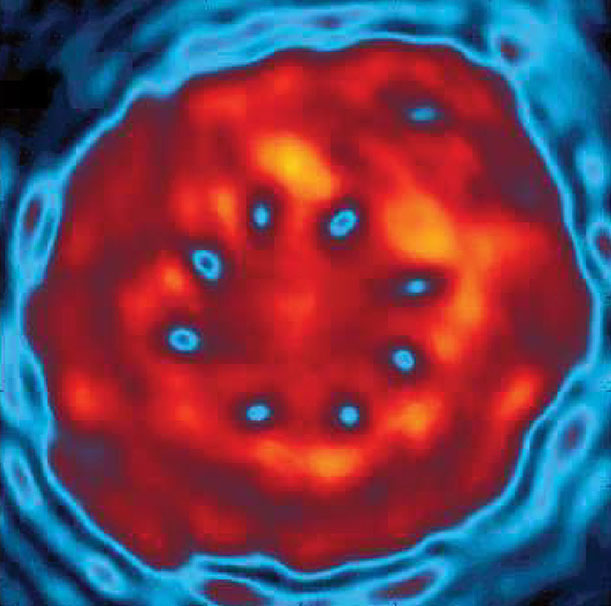Quanta of vorticity in exciton-polariton superfluids

Quantized vortices are one of the most striking manifestations of superfluidity, such as found in Bose-Einstein condensates. In our work with Alberto Bramati at LKB, we used exciton-polaritons to generate elementary vortices (quanta of angular momentum) by injecting a global angular momentum into a polariton superfluid. Since polaritons have a short lifetime, many questions remain open: is the angular momentum conserved? Can a large angular momentum spontaneously break down into individual quanta? How long does the angular momentun survives?
In a series of studies, we tackle some of these questions. We show that vortex lattices can arise from the superfluid flow (Phys. Rev. B 89, 134501 (2014), pre-print), that angular momentum can be injected by careful engineering of the superfluid flow (Phys. Rev. Lett. 116, 116402 (2016), pre-print), and that patterns of elementary vortices of the same sign can be engineered with light-shaping technologies (Sci. Rep. 5, 9230 (2015)).
This body for work shows that, at high polariton density, the strong nonlinear polariton-polariton repulsion completely dominates the behaviour of the system. In turn, this makes the system well described as a 2D superfluid, while without interactions the system is descibed by linear interferences (coherent optics). Interactions between many photons therefore drive a transition between quanum optics and quantum hydrodynamics!

